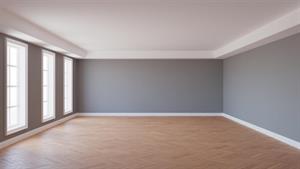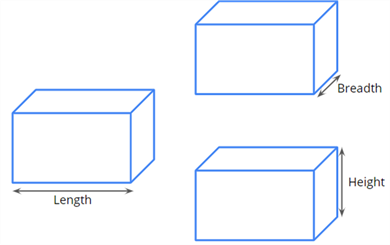PDF chapter test TRY NOW
Length is one of the fundamental quantity that cannot be conveyed in any other way. Other measurements, such as area and volume, can be calculated using length.
Area
In general, two lengths are used to calculate the area of an object.

The formula is given as,
By using the above formula, the area of a book, house or even a garden can be found. The SI unit for the area of a surface is m^2 since it is a product of two lengths.
Example:
Assume the length and breadth of the wall are 20\ m and 8\ m, respectively. Then, what will be the area of the wall?

Length of the wall = 20\ m
Breadth of the wall = 8\ m
Therefore, the area of the wall is 160 m^2.
Volume of solids
A volume is the amount of space occupied by any three-dimensional object. It is also a derived quantity that can be measured by measuring lengths. The formula is written as,
The SI unit of volume is a cubic metre or m^3.
Calculation of volume of a solid box
A volume of a solid box can be found using three parameters such as length (l), breadth (b) and height (h). These parameters are measured using a measuring scale in terms of cm or m.

If the unit of volume is written in cm, then
Volume = centimetre × centimetre × centimetre
= cubic\ centimetre or cm^3
Example:
Look at the image of the solid box and calculate its volume.

The dimensions of the solid box are given below:
Length, l\ = 10\ cm
Breadth, b\ = 10\ cm
Height, h\ = 10\ cm
Length, l\ = 10\ cm
Breadth, b\ = 10\ cm
Height, h\ = 10\ cm
By substituting the known value on the formula, we get the following.
If the volume of a solid cubical box is 1000\ cubic\ cm, then it means that 1000 cubes, each with dimensions 1 cm × 1 cm × 1 cm, can be placed inside the box.
